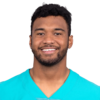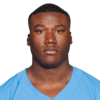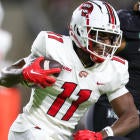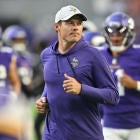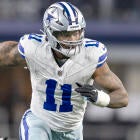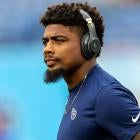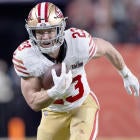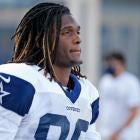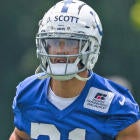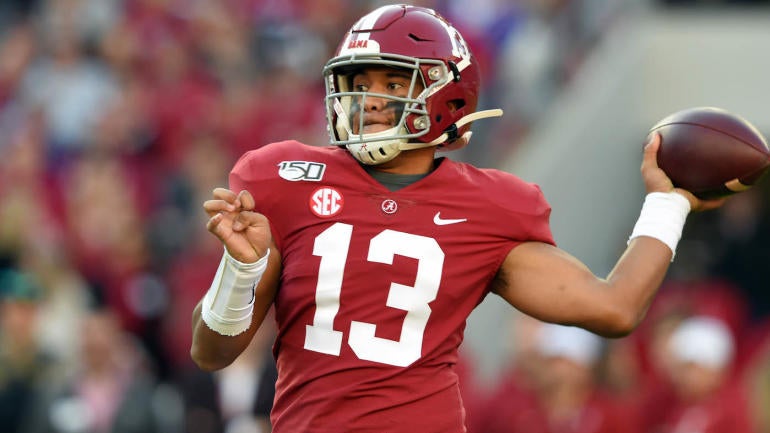
Not every first-round pick is truly ready to make an instant impact in the NFL, and the shortened offseason due to COVID-19 will have a more profound effect than ever on those raw rookies. No minicamps and preseason with two or fewer games means missed reps for those first-year pros trying to polish their skill sets en route to producing early in their pro careers. Oftentimes teams take a calculated risk by picking an unrefined prospect early in the NFL Draft simply due to his athletic prowess with the thought that NFL coaching will lead to technical improvement.
Earlier this week, I did a deep dive into six rookies with the game to immediately produce at a high level. The shortened offseason won't affect the speed of their acclimation process into the NFL. Jerry Jeudy is the headliner, but a quartet of first-year defenders had long, illustrious collegiate careers and honed their position-specific skills along the way, so they'll be ready to hit the ground running on Sundays.
But these are the marquee rookies most negatively impacted by the modified offseason.
Tagovailoa is up against it more than the other top quarterbacks in this class because he's returning from a serious, obscure hip injury that sidelined him for the end of the 2019 season at Alabama and kept him from participating in the pre-draft process before COVID-19 halted everything.
Minicamps aren't foundational to the acclimation process for rookies in the NFL, but every practice rep has value, especially for someone in Tagovailoa's predicament. And a full preseason would've been so beneficial for the No. 5 overall pick in the 2020 draft. I mean, he hasn't thrown a pass since mid-November. It's one thing to run through a ladder drill set up by your quarterback coach and another to take reps in a training camp practice and a bigger jump in difficultly dropping back in an exhibition game.
Even coach Brian Flores stated he wants to see Tagovailoa in "multiple practices" before setting expectations for the rookie passer.
For as advanced as I think Tagovailoa is drifting in the pocket and knowing where to go with the football, for all intents in purposes, before his injury, his 2019 campaign at Alabama was a cake walk thanks to the phenomenally comfortable environment provided by a litany of first-round picks around him on the offensive line and at receiver.
While the Dolphins invested up front in the draft and have a solid wideout group for a team that only won five games last season, Tagovailoa is going to have to do more heavy lifting when he does get on the field in Miami. And he could've benefited a great deal from a normal amount of time on the practice and preseason field learning from Ryan Fitzpatrick.
Yes, I'm keenly aware Simmons was probably the most widely adored draft prospect in the 2020 class. I mean, he was the No. 7 overall prospect on my final Big Board.
And typically, someone as incredibly athletic as Simmons -- who ran 4.38 and had a 39-inch vertical at 6-foot-4 and 238 pounds at the combine -- doesn't have many issues acclimating to the NFL. But the grand allure of Simmons centered around his extraordinary versatility and how he'd help to usher in the positionless era, particularly on defense.
But in late April, ESPN Cardinals reporter Josh Weinfuss tweeted that Arizona's defensive coordinator Vance Joseph said "Simmons will be a linebacker for the Cardinals. It's unlikely he'll play much safety or corner."
Booo. Anyway, if that one, focused role does happen for Simmons with the Cardinals, it'll be new for him. According to the Pro Football Focus Draft Guide, he aligned as a slot cornerback (262 snaps) nearly as often as he played in the box (299 snaps) in 2019. Heck, he even played free safety for 132 snaps and actually dropped down to the defensive line for 116 snaps.
And, my one concern with Simmons was his ability to defeat blocks in traffic, simply because Clemson defensive coordinator Brent Venables' scheme kept the multi-faceted defender mostly clean and in pure attack mode.
Not having the extra reps to truly "learn" the intricacies of primarily playing a traditional linebacker position will slow Simmons' development in the NFL. And, really, Arizona should just use him as a hybrid defender like he was in college. That would solve everything on this front. Simmons had 104 tackles, 16.5 tackles for loss, eight sacks, three picks, eight pass breakups, and two forced fumbles as a positionless player at Clemson last season.
Jackson needs two things before he has any chance to succeed and meet the expectations that come with being a first-round pick in Miami -- practice/preseason reps and time in the weight room.
Fortunately for the not-yet 21-year-old rookie, he's had ample time to work out to build strength to deal with bull rushes and power moves from NFL edge rushers.
However, a lack of strength isn't the only hole in his game. For as perfect of a prototype he is physically -- 6-foot-5 and 322 pounds with arms over 34 inches and a stellar combine workout on his resume -- Jackson's balance when facing a quality pass-rush move is suspect. He struggles to recover even if he's initially in ideal position after his smooth kick slide in pass protection.
Jackson needs as many reps against professional pass rushers to hone the technical side of his game and to gauge how he's coming along strength-wise. The shortened offseason won't do him any favors.
Murray is a missile at the second level, and he demonstrated at the combine he has elite speed for the linebacker spot when he ran 4.52 at a menacing 6-2 and 241 pounds. He's fast and explosive and will be a run-game wrecker for the Chargers right away.
But coverage ability is more vital than anything else for linebackers in today's NFL. And Murray simply doesn't have much experience sinking in zone or running with a tight end or back in man. At Oklahoma, he was almost solely utilized as a blitzer or quarterback spy in passing situations.
He has a dire need to be coached on processing routes around him, finding the football after flying down the seam, and simply breaking on the football on time. And Murray just isn't going to get that much time this offseason with his NFL linebackers coach and veteran defensive coordinator Gus Bradley. That's a bummer. Because he has the athleticism to flourish in coverage, he's just incredibly raw in that critical area of playing the position.
Cesar Ruiz, OL, Saints
They say it's not flipping from one side of the offensive line to the other, but how about moving from center to guard? Unless Ruiz usurps 2019 second-round pick Erik McCoy, who was rock-solid at center as a rookie, Ruiz will go from multiple years manning the pivot at Michigan to right guard in the NFL.
Most interior linemen can make position change, but often it takes time before we see quality play from those moved blockers. In 2018, the Lions picked longtime center Frank Ragnow in Round 1, he played guard as a rookie, mostly disappointed, then thrived when Detroit's coaching staff decided to move him back to his natural spot in Year 2.
Without minicamp and some (or maybe eventually all) of the preseason to memorize and execute unfamiliar responsibilities from the guard position, Ruiz very well could be experience a steep learning curve in New Orleans in 2020. If he wins the center job, great, and nevermind all this about him.







